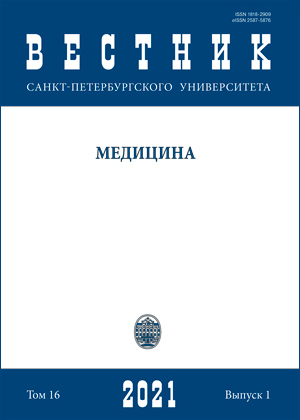Epidemiological and clinical features of the course of postoperative sternomediastinitis (clinical case)
DOI:
https://doi.org/10.21638/spbu11.2021.107Abstract
Health-care-related infections are becoming more relevant today. The difficulty and largely of diagnosis increased impact of adverse effects (postoperative period, increase of bed-days, use of irrational antibacterial therapy, use of excessive methods of disinfection) factors of the hospital environment on the human body, contributing to the development of severe postoperative complications, among them, sternomediastinitis occupies a special place in cardiac surgery. The clinical case we represent clearly demonstrates the atypical flow of sternominetite caused by the hypervirulent strain Klebsiella pneumoniae blaNDM-Type. Generally, sternomediastinitis causes Staphylococcus epidermidis, Staphylococcus haemolyticus. Every week the patient stays in the cardiothoracic ward of the hospital is associated with a 15 % increase in the risk of mediastinitis development. The data indicate the need for continuous epidemiological monitoring of the relevant microorganisms that are potential agents of nosocomial
infections. Thus, adequate diagnosis, choice of rational treatment tactics and effective antibacterial therapy significantly improve the prognosis of the current of a given severe disease. Early epidemiological diagnosis will help to reduce the risk of the development and spread of hospital-acquired infections in the post-operative period.
Keywords:
Klebsiella pneumoniae blaNDM-Type, nosocomial infection, sternomediastinitis, epidemiological process, carbapenemaza, hypervirulence
Downloads
References
References
Downloads
Published
How to Cite
Issue
Section
License
Articles of "Vestnik of Saint Petersburg University. Medicine" are open access distributed under the terms of the License Agreement with Saint Petersburg State University, which permits to the authors unrestricted distribution and self-archiving free of charge.




